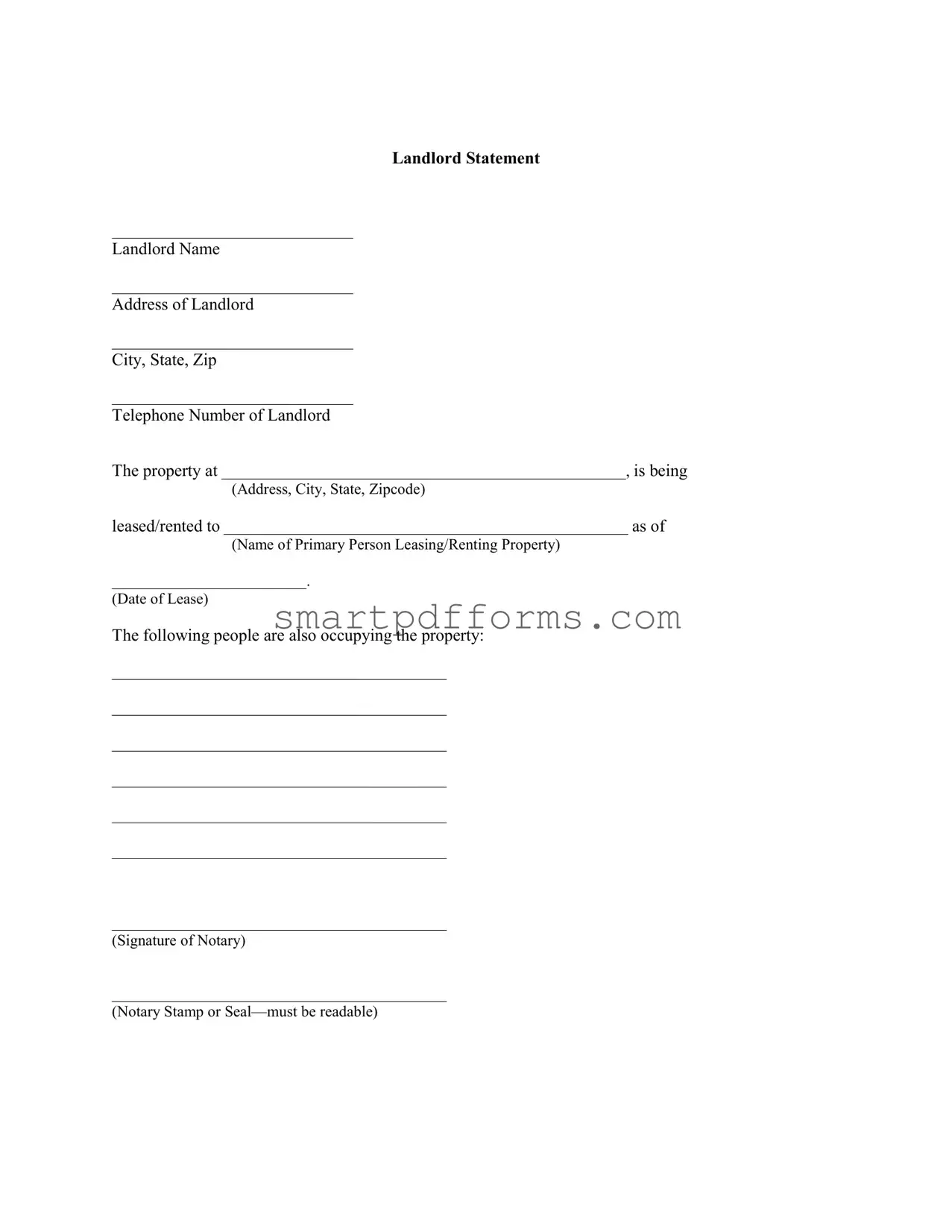Blank Landlord Statement PDF Template
The Landlord Statement form serves as a crucial document that records key details about a rental agreement, including the landlord’s information, the address of the property, and the names of the tenants currently leasing or renting the property. This form, often required for various legal, financial, or housing processes, acts as an official statement from the landlord. To ensure all your rental agreements are accurately documented and easily accessible, consider filling out your Landlord Statement form today by clicking the button below.
Make This Document Now
